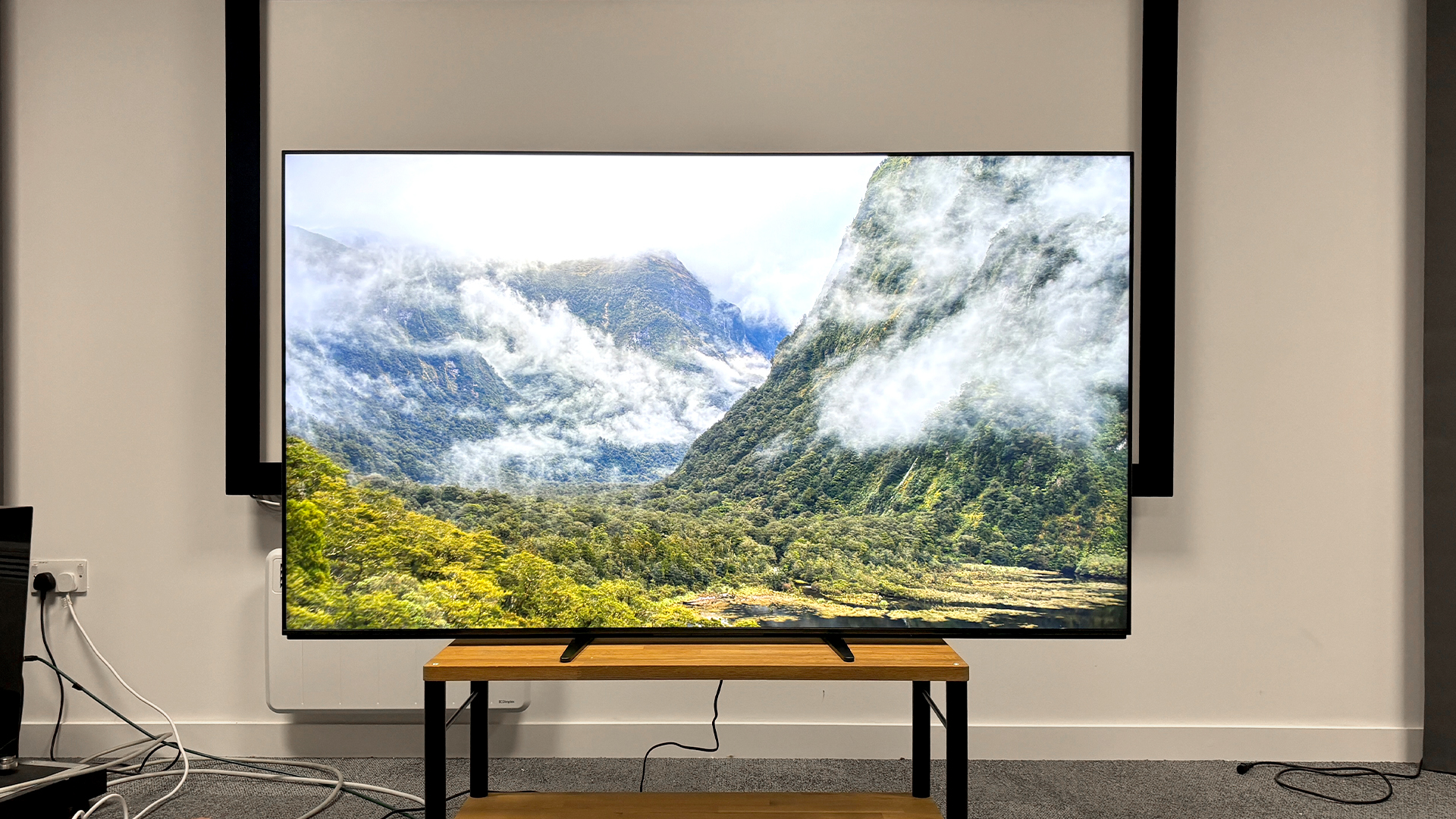
Sony’s strategy for its 2024 TV lineup is about as bold and unconventional as it gets. While practically every other manufacturer has shown off a full range of brand-new TVs with an advanced OLED model taking the flagship spot, Sony has instead put its eggs in the Mini LED basket with the Bravia 9.
It’s just one of three new models for 2024, while the rest of Sony’s lineup comprises TVs released either last year or even the year before. Considering Sony’s near-perfect track record within the last year, we wouldn’t have blamed the brand for releasing a lineup of samey sets with modest upgrades and new model numbers for 2024, but it has grander plans.
Instead, it's made a huge gamble by leveraging its experience in the production of films and using that as the philosophy behind this new Bravia range. If Sony has a hand in producing the content – think Sony Pictures as well as the cameras and mastering monitors used to shoot and edit Hollywood films – then surely it should be able to deliver the ideal screen on which to watch said content.
That’s where the Bravia 9 comes in. Its heritage lies in the editing bays of multi-million dollar movie studios, and Sony hasn’t been shy in comparing this TV to its new 4000-nit mastering monitor, the BVM-HX3110. It’s also made direct jabs at OLED, hinting that this new Mini LED backlight could be the next evolutionary step in panel technology.
We initially reviewed this TV in July 2024, and found that an issue arose when playing bright content that resulted in a noticeable raising and lowering of the backlight. That, alongside other picture aspects such as somewhat dull picture modes and a lack of finesse, resulted in us awarding it four stars. Four months later, Sony says it has addressed the issues we raised, so we have decided to give it a fresh look and update our review.
So, is the Bravia 9 now better? It certainly is. But can it now be counted among the very best TVs currently available? That's where things get complicated.
Price
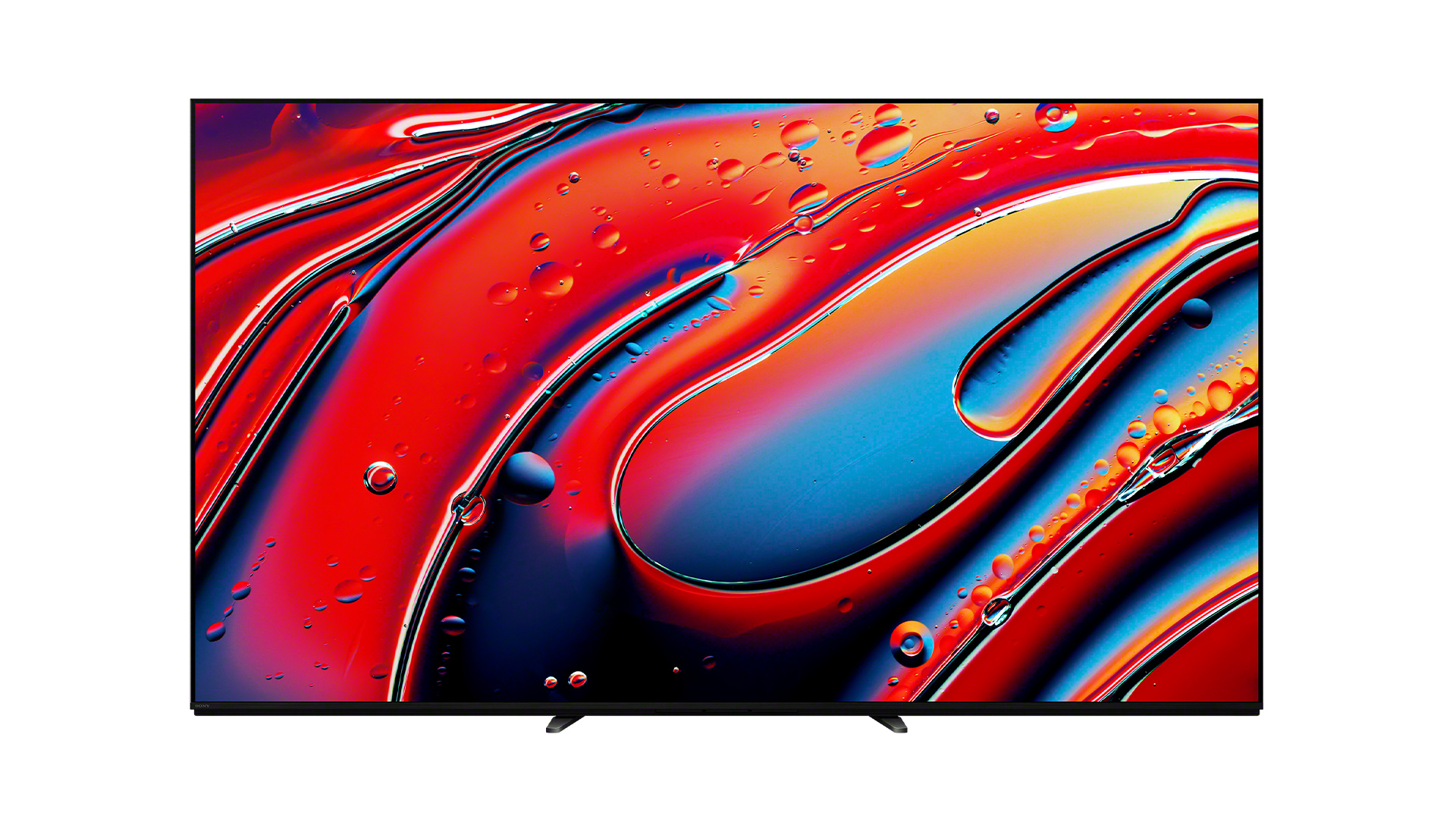
- Very expensive for a backlit TV at launch, but prices have now dropped significantly
- Replaced the X95L Mini LED model and sits alongside the A95L QD-OLED
- The Bravia 8 OLED is available for very similar money
Sony stumbled with the initial launch of the Bravia 9, deciding to offer it in the UK only in its 75- and 85-inch sizes, and with very high price tags of £4499 / $4000 / AU$6995 and £4999 / $5500 / AU$7995 respectively. So there was a size issue as well as a price issue.
Thankfully, Sony has since seen sense and launched the 65-inch Bravia 9 in the UK, albeit at a price of £2999. The price of the 75-inch model tested, though, has dropped a huge amount and can now be yours for £3099 / $3500.
Despite being Sony’s latest flagship TV, the Bravia 9 isn’t the replacement for the spectacular A95L (£5499 / $4998 for the 77-inch version) in Sony’s roster. That TV is rightfully sticking around for a bit longer after launching late last year. Instead, the Bravia 9 is positioned as a replacement for the X95L (£2199 / $2199), which was Sony’s high-end Mini LED TV for 2023.
In terms of non-Sony competition, the Bravia 9 is up against some tough rivals from the likes of LG and Samsung. The LG G4 (which we have in our TV testing room to compare the Bravia 9 against) with its Micro Lens Array brightness boosting tech and the QD-OLED-touting Samsung S95D have already scored highly in our reviews, and both are available in 77-inch sizes for less than the Bravia 9.
Sony has also provided itself with a fierce competitor in the form of the Bravia 8 OLED TV. This TV has just been given a prestigious What Hi-Fi? Award and is available at 77 inches for £2899 / $2600 / AU$6995 – so it's cheaper than the Bravia 9 by about £200 in the UK and $900 in the US.
Design and build quality
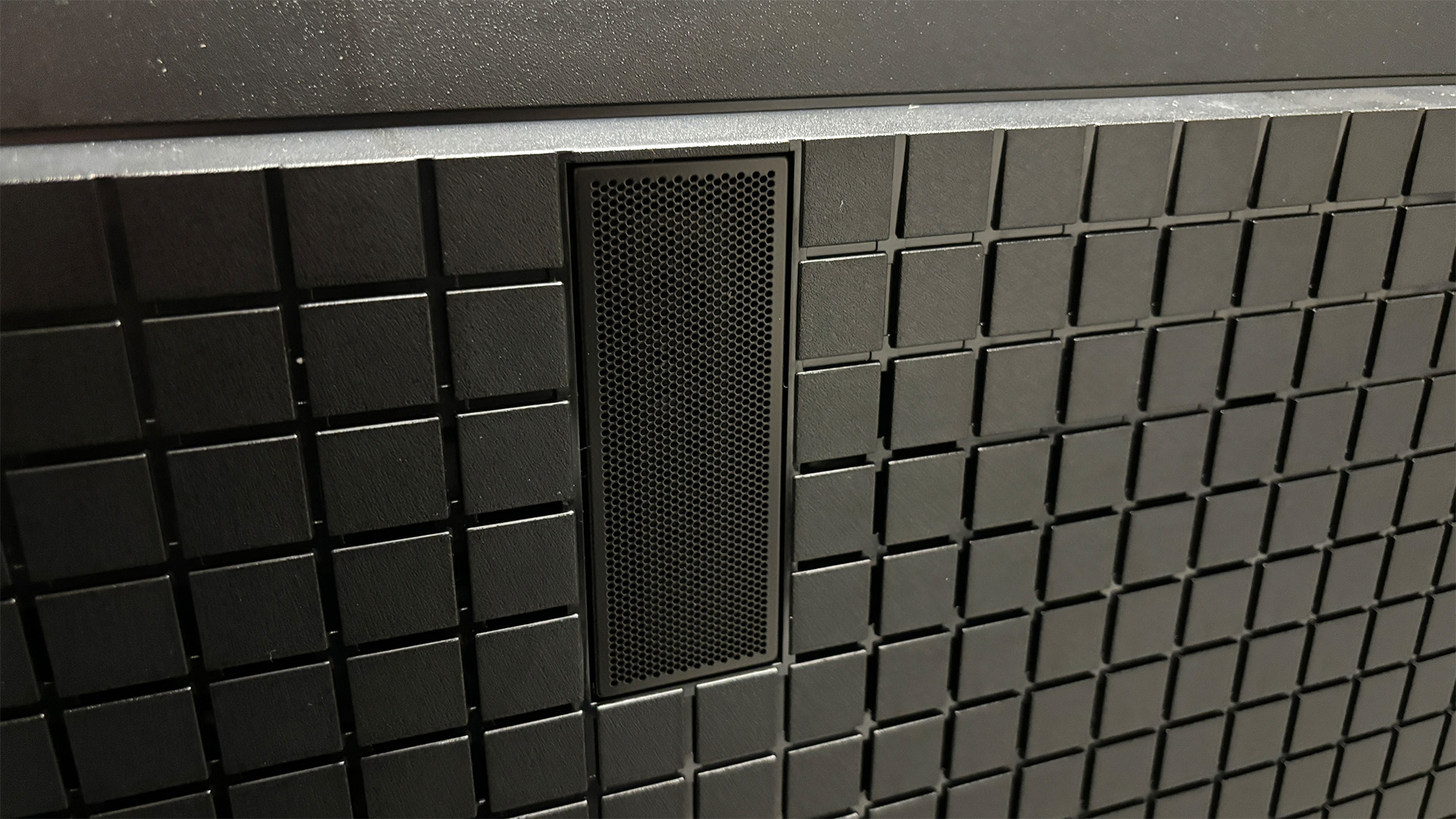
- Unsurprisingly much chunkier than its OLED rivals
- Feet can be placed at the ends of the bottom edge or towards the centre
- Rechargeable, backlit controller with 'find my remote' feature
At 75 inches, our Bravia 9 sample is a sizeable opponent to the more conventional 65-inch LG G4 and 65-inch Bravia 8 that we have placed it alongside for testing. As you would expect, given that this is a backlit TV, It’s also much thicker than most of the OLED sets we see. Elsewhere, the Bravia 9 bears the marks of other Sony sets, including a crosshatched pattern across the back with Sony’s recycled SORPLAS material making up a claimed 65 per cent of the TV’s body – a nice touch for the eco-conscious.
Sony has also continued one of our favourite aspects of its 2023 models with the Bravia 9, and that has to do with the adjustable stand. The Bravia 9 sits atop two fairly flat and minimal feet, but you can place these in either a wide or narrow configuration depending on the width of your TV stand. Better yet, you can choose between two heights, with a sleek, low-profile option or a higher position that can accommodate a soundbar.
Finally, Sony has packaged an updated remote with this new generation of Bravia TVs, so alongside an old-school button-heavy affair, there's a new Eco Remote, which is also made of recycled SORPLAS material. It features a new speckled green effect to hint towards its eco-friendliness, a USB-C socket for recharging the internal battery, and the backlit buttons from the previous generation remote make a comeback. This remote also has a speaker built in for a handy “find my remote” function and a microphone for interacting with the Google Assistant.
Features
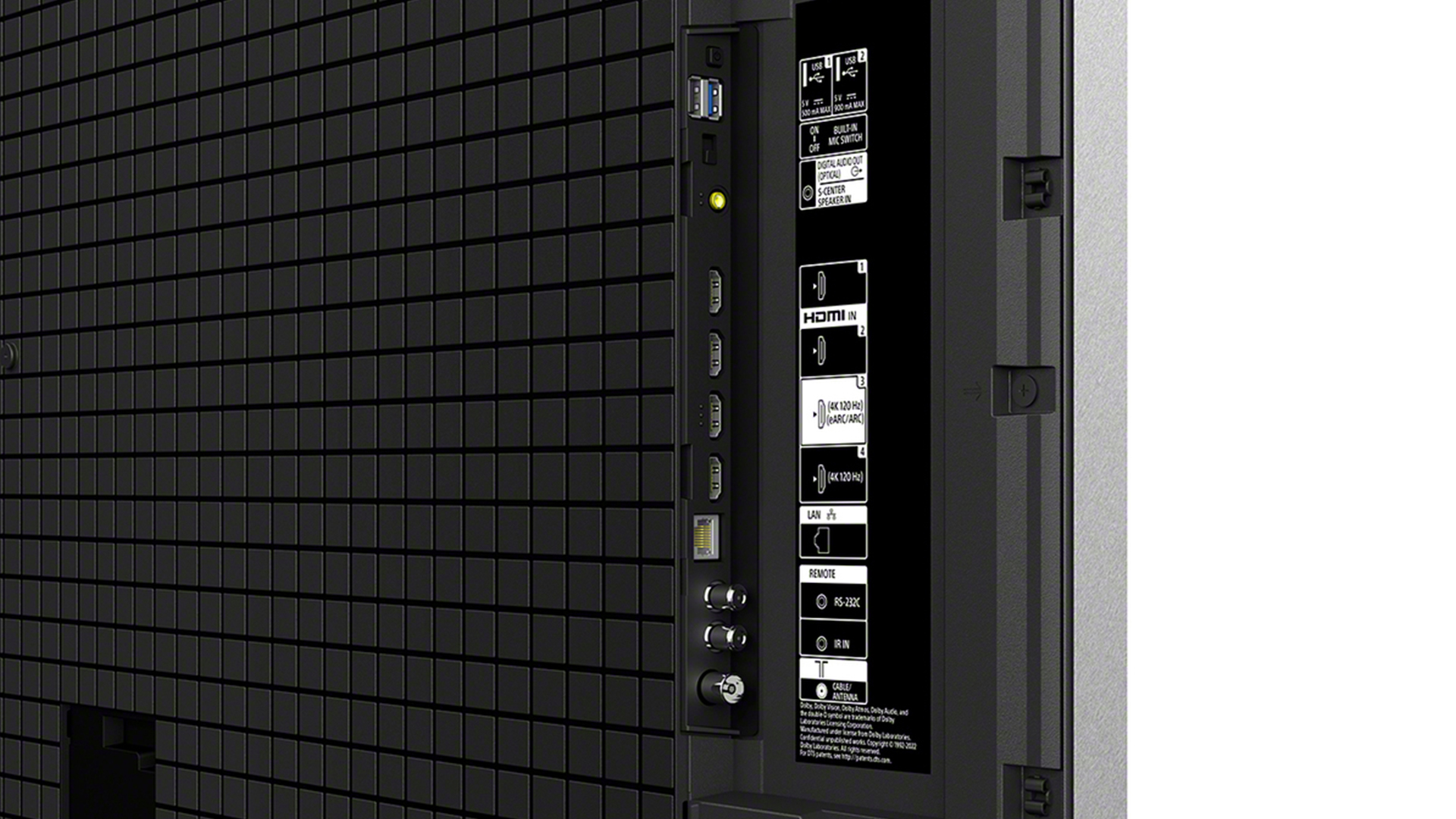
- Super-bright, next-gen Mini LED backlight and Quantum Dot colours
- Google TV operating system
- Still just two HDMI 2.1 sockets
The headline feature of the Bravia 9 is Sony’s next-gen Mini LED-based backlighting system, which is making its grand debut on the Bravia 9. This is the only TV of the three new models to be graced with the advanced new backlighting system, which leverages Sony’s updated Bravia XR processor alongside more advanced LED drivers. These cutting-edge drivers allow for more granular control of the backlight compared with other Mini LED TVs; each driver consists of six channels, each comprising four LEDs. Each channel can be considered an individual dimming zone.
Sony remains coy with specific details, meaning we don’t know exactly how many dimming zones this TV has, however, it claims that it features three times the dimming zones of the outgoing X95L, as well as being 50 per cent brighter. While we haven’t got exact figures, a quick count during a hands-on event earlier in the year suggested that the 75-inch Bravia 9 has 7680 individual LEDs, 320 LED drivers and 1920 independent dimming zones – though we wouldn't want to bet the house on those figures being 100 per cent accurate.
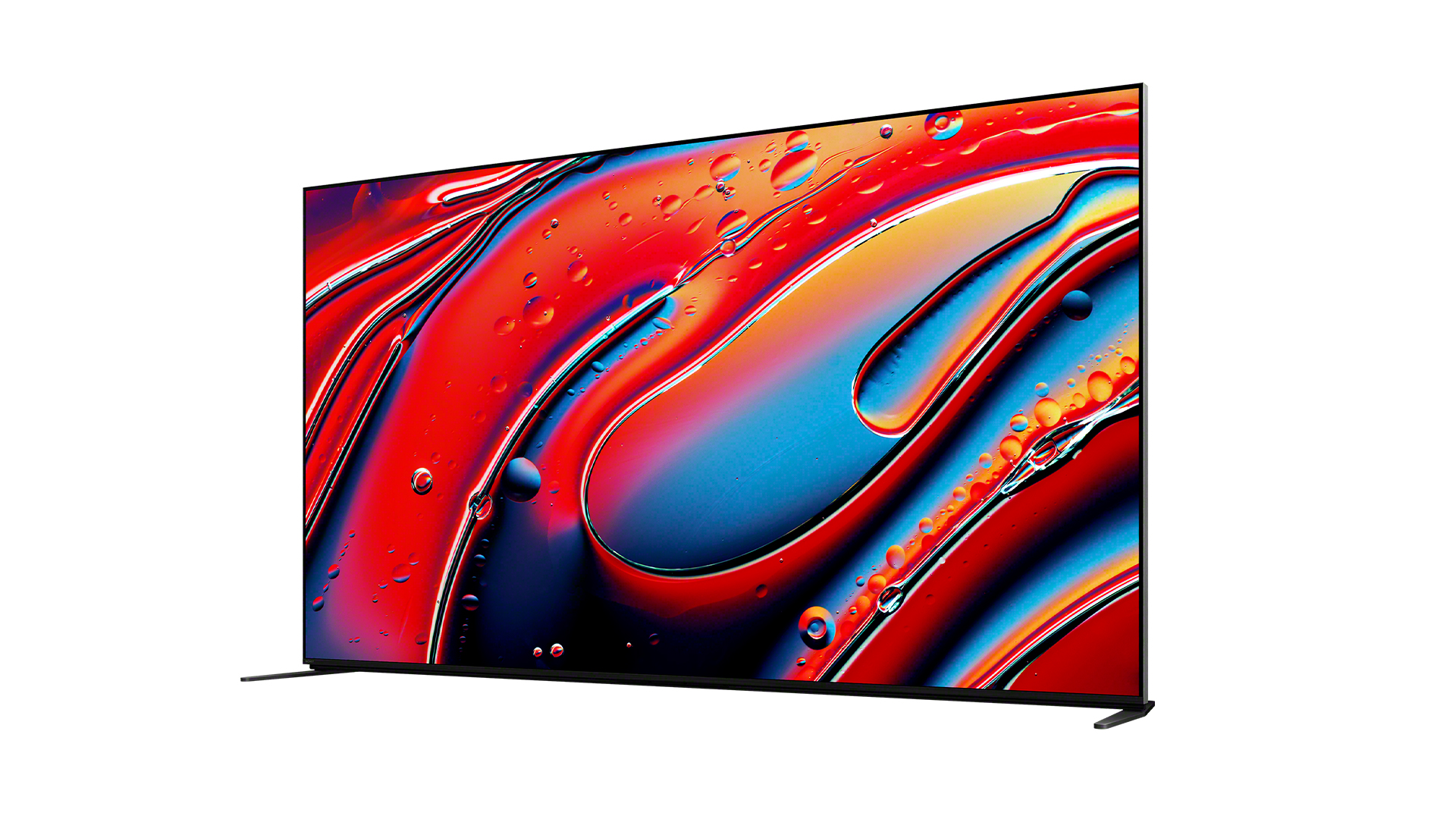
Screen size 75 inches (also available in 65in, 85in)
Type QLED
Backlight Mini LED
Resolution 4K
HDR formats HLG, HDR10, Dolby Vision HDR
Operating system Google TV
HDMI inputs x 4 – 48Gbps HDMI 2.1 x 2, HDMI 2.0 x 2
Gaming features 4K/120Hz, VRR, ALLM
Input lag 17ms (60Hz)
ARC/eARC eARC
Optical output? Yes
Dimensions (hwd, without stand) 96 x 167 x 4.8cm
Even if we're only close, that’s a pretty big jump in the sheer quantity of dimming zones. However, Sony stresses that the drivers are truly the most important factor. They can exert far greater control of the current reaching the Mini LEDs than the equivalent drivers in rival sets and therefore have greater control over the brightness of each dimming zone. This should have a huge impact on contrast and the effectiveness of the local dimming, in turn reducing the appearance of blooming and halo effects. There is, of course, also the increase in brightness to account for. While Sony is playing its cards close to its chest in revealing specific figures, it’s been strongly hinted that a figure around 4000 nits might not be far off.
Despite the increase in brightness, this backlighting system is supposedly more energy efficient than previous examples. Sony specifically claims that the Bravia 9 is 30 per cent more power efficient than the outgoing X95L. You can even track your usage with the Eco Dashboard feature baked into the software, which is also home to a handful of settings and useful tips for those who wish to save on energy consumption. However, if you’re after pure performance, you’ll want to disable those settings as they can limit the TV’s brightness capabilities.
Speaking of software, the Bravia 9 is running the Google TV operating system, which should come as no surprise considering Sony’s 2023 lineup used the same OS. App compatibility is great with no noticeable gaps, including worldwide streaming applications such as Netflix, Disney Plus, Apple TV+, Amazon Prime Video and, of course, Sony-owned apps such as Sony Pictures Core and Crunchyroll. Local streaming apps are also well supported, with BBC iPlayer, ITV X, Channel 4 and Channel 5 all present and correct. We didn’t come across any noticeable issues with streaming from these apps, with all of them correctly streaming in 4K HDR where applicable.
On the subject of streaming, another feature that’s new on the Bravia 9 is the Amazon Prime Video Calibrated mode. While watching supported Prime Video content, the TV will collect data stored in the cloud to adjust the picture of your TV to suit the content being shown. We took this mode for a quick spin with the macho punch-up blockbuster Road House (the 2024 version, not the 1989 original) and we mostly like what’s on show. It appears to tweak the colours and lighting slightly to capture the grungy and dark atmosphere of the film, however, it can be turned off if you’d prefer to do without this feature. It’s worth noting that calibrated modes for Sony Pictures Core (formerly Bravia Core) and Netflix already exist on previous Sony models, and these modes also return on the Bravia 9.
One thing that we aren’t as much of a fan of is how sluggish the set can feel at times; an issue that persists with our second sample of the Bravia 9. Despite Sony's super smart and powerful Bravia XR Processor running the show, we can’t help but feel that the settings menus and Google TV home screen could be a bit more responsive. Considering we spend quite a lot of time jumping in and out of the picture menu to fiddle with individual settings, it becomes a touch frustrating the more we test this TV. Interestingly, the Bravia 8 appears to handle the Google TV menus and settings pages much more fluidly.
Moving onto connectivity, there is one more minor frustration that we find it hard to believe we’re still complaining about in 2024. This TV only features two HDMI 2.1 sockets, with one of those sockets doubling as the HDMI eARC connection. This will be an annoyance for avid gamers who own both current-generation consoles (and/or a gaming PC) and an AVR or soundbar. That said, the Bravia 9 supports 4K/120Hz gaming with VRR on both of those HDMI 2.1 ports, with the two remaining HDMI sockets still able to support 4K/60Hz gaming. All four sockets support ALLM. There is also an optical connection, ethernet and two USB ports.
The Bravia 9 is also well equipped where wireless connectivity is concerned, with wi-fi and Bluetooth 5.3 with the LE codec supported, alongside Apple AirPlay, Apple HomeKit and Google Chromecast Built-in.
Moving on to HDR support, the Bravia 9 sticks with the usual HDR10, Dolby Vision and HLG combo that we’ve come to expect from Sony. Once again, HDR10+ is not supported. However, Sony does include an IMAX Enhanced picture mode, which will work with the small selection of IMAX Enhanced content available on Disney Plus.
Rounding things out is the new 70W 2.2.2-channel speaker system. Sony has attempted to emulate the actuator system found on its OLED models to continue the 'sound from the screen' experience. It’s not possible to vibrate the screen of a backlit TV in the same way as it does on the Bravia 8 and A95L, so Sony has cleverly addressed this issue by surrounding the screen with speakers. This includes two front-facing 10W midrange drivers, two 5W tweeters built into the sides and – in an apparent first – two upward-firing 10W beam tweeters built into the top edge, which have a hand in delivering Dolby Atmos height effects. These are backed up by dual 10W rear-mounted subwoofers.
Picture quality
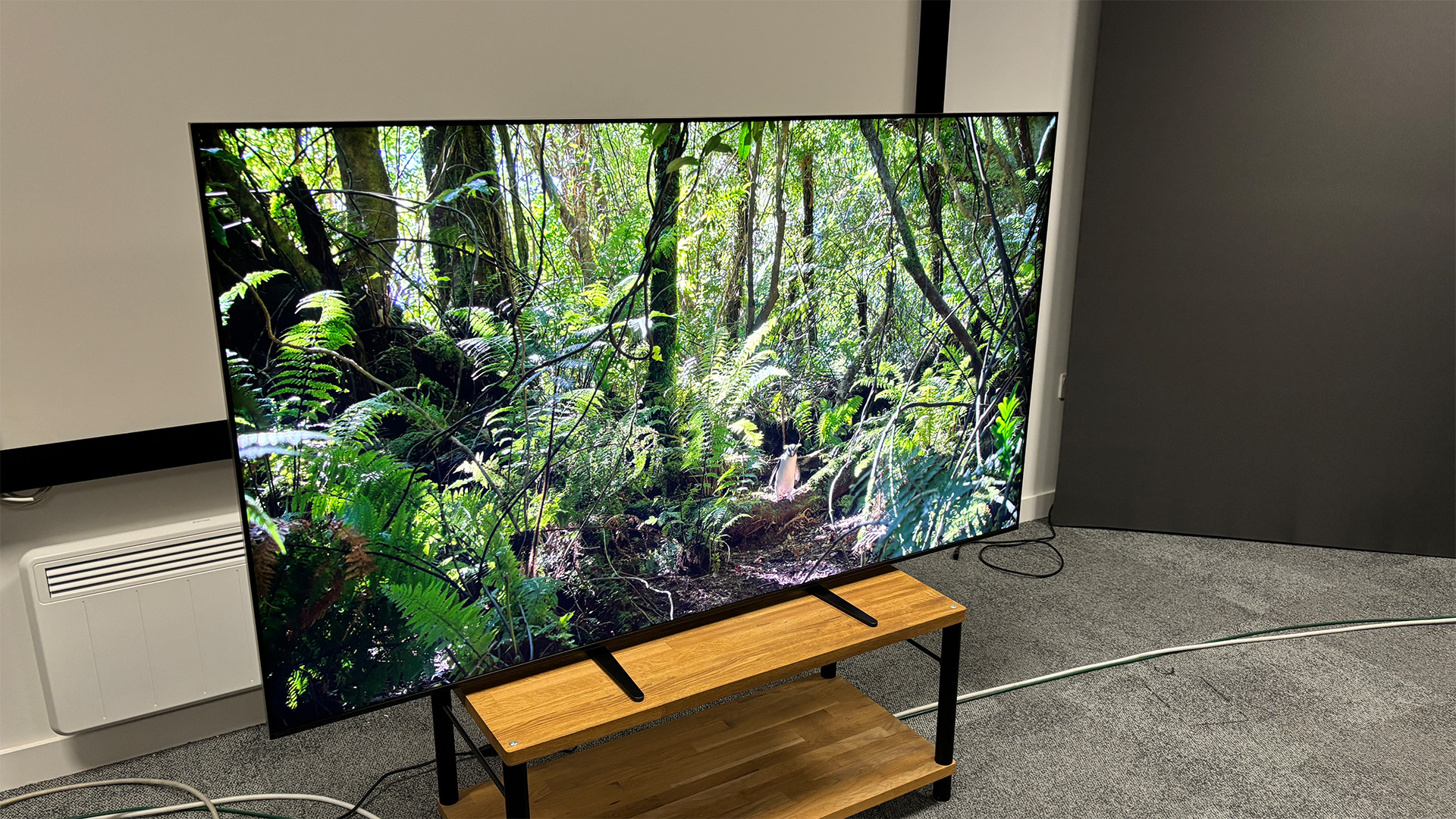
- Stunningly bright and vibrant when required, but still subtle and cinematically accurate
- Very impressive black depth and contrast control for a backlit TV
- But the Bravia 8 still performs better with most current content
The most important aspect of any TV’s performance, of course, is the picture. Sony has made some seriously bold claims with this set, so expectations are high, especially for a TV at this price. We’ve paired the Bravia 9 with our trusty Panasonic DP-UB820EB 4K Blu-ray player, alongside a few of our favourite reference movies, such as Oppenheimer, The Batman, Top Gun: Maverick and Blade Runner 2049, as well as some films mastered to very high brightness, such as Pan (mastered at 4000 nits) and Mad Max: Fury Road (mastered at 2500 nits).
As you may remember from our first review, there was an issue with the backlight that caused jarring jumps in brightness during content mastered to high nits. Essentially, the TV would adapt its backlight to the content before the content required it. So, for example, if a movie had a bright shot immediately after a dark one, the brightness would be boosted before the transition. Needless to say, this was very distracting.
While we did caveat that we don't anticipate that many people are buying this TV to exclusively watch the very limited amount of super-bright content that is currently available, we did have to make note of the fact that Sony has built this TV with the wave of high brightness content that the company believes will arrive in the next few years in mind. We therefore expected it to excel in this area, and it did not.
Now that we've seen the Bravia 9 for a second time, we're pleased to report that Sony has done a great job of addressing this issue. We re-watch the pirate ship scene in Pan that first drew our attention to the problem in various picture modes and find the backlight's behaviour to be much more consistent.
Furthermore, this issue never presented itself in films mastered at lower brightness levels, such as Oppenheimer and The Batman, and this remains the case in our second bout of TV testing.
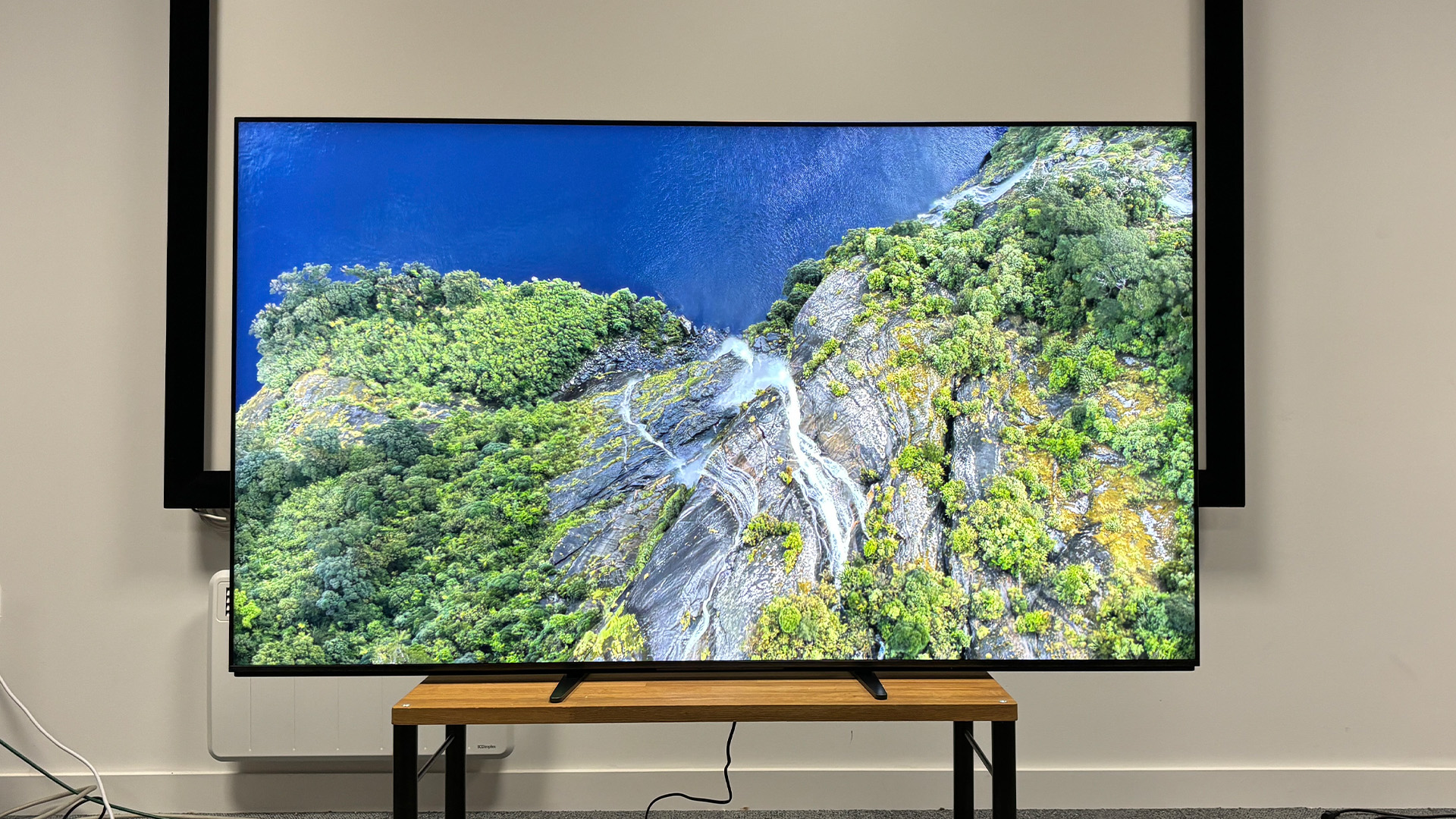
Sony has also addressed our criticisms of some of the picture mode presets, which could present content in a rather flat and unengaging manner. Make no mistake, the Bravia 9 is still a somewhat fussy TV that requires some tweaking in the picture menus to get performing at its best, but there is much less tweaking required now that the Cinema mode has been improved.
This preset has been upgraded to feature more depth and solidity in the image, with sharper outlines and improved contrast, making it appear less dull and flat than when we first saw it. It also uses the Expert 1 colour profile, which we approve of, though we do still make one adjustment in turning Live Colour up to Medium. This produces a more balanced image while still allowing the TV to flex its muscles in the brightness department. It's sharper and more impactful than the last time we looked at it, not to mention much easier to set up.
On the other hand, the Professional preset, which should be right up our street thanks to its promise of cinematic authenticity based on the creator's intent, is still far too dark for our liking, even when viewing in a pitch-black room. At least now, though, there's a more satisfying alternative.
Thankfully, while this TV is fussy (and at times frustrating), it’s also dazzling when you feed it the right content. Back to Pan, the highlights seen as the ship descends through space and glides into a dreamlike floating ocean are exceptional, with rich, impactful orange hues and noticeable detail in the very centre of the sun – something that we do not see in the deliveries of the LG G4 or Bravia 8.
The floating bubbles ooze with gorgeous colour variation, with rich emerald greens at the centre melting into sparkling blues. These bubbles also highlight the Bravia 9’s contrast capabilities, as they have wonderfully sharp outlines that present a striking yet still natural three-dimensional effect.
Onto some darker content, and Oppenheimer is a similarly impressive show, with a masterclass in local dimming on display. Black levels aren’t quite OLED level, as the pixel level control of the G4 and Bravia 8 is still superior; however, for a backlit TV, the Bravia 9 is mighty impressive. In the shot of a runway being lit up at night (the same shot that proved to be a challenge too far for the Samsung QN95D), the Bravia 9 doesn’t falter by brightening the surroundings of the spotlights. On the contrary, it keeps tight control over how the light is displayed, with very little haloing, and the surrounding black is also very deep by LCD standards.
Colours are also well-balanced overall. While we would like to see an extra touch of warmth to skin tones, they generally come across as natural. We’re in favour of the Live Colour Enhancer feature, as it adds a bit of needed richness to colours, but we recommend that you keep it to the Medium setting for the best results, as High can look a tad overcooked. We also have to give the LG G4 its dues for retaining colour volume in low-light scenes, as the Sony can look slightly pale in comparison.
Top Gun: Maverick continues the dazzling brightness as glints of sunlight reflect off cockpits and visors in spectacular fashion, and the Bravia 9 remains unphased by fast-moving fighter jets. We have dialled the Motionflow setting down, but that hasn’t introduced any noticeable judder, and in the picture presets with more aggressive Motionflow settings applied, we find movement to look off-puttingly smooth.
It's with Blade Runner 2049 that we really settle on our opinion of this TV’s picture performance. While the Bravia 9 is a promising first-generation use of this backlighting technology, it still can't quite match the cinematic strengths of OLED. Side by side with the Bravia 8, we come to a realisation: the Bravia 9 seems designed to solve a problem that we're not convinced truly exists, and it brings with it some inherent compromises elsewhere.
We recognise that the Bravia 8 we have is smaller, and therefore has a higher pixel density than our Bravia 9, and we take that into account with our comparative testing. Even so, details in the eye of the opening shot of Blade Runner 2049, the outlines of characters in Sapper Morton's farmhouse and the buildings of the dystopian 2049 Los Angeles skyline are all simply sharper, cleaner and more three-dimensional on the Bravia 8. Moreover, skin tones look fuller and richer on the cheaper OLED model, while they can comparatively look washed out on the Bravia 9. The bright neon signs scattered throughout the dark city also look more vibrant and impactful on the Bravia 8 than they do the Bravia 9.
That certainly isn't to say that the Bravia 8 will be the better TV for everyone – those who watch a lot of very bright content and in bright rooms will probably find the Bravia 9 to be a great choice – but most of the content we watch (which is broadly representative of most of the content available at home) looks more appealing and balanced from the step-down OLED model than it does the Mini LED flagship.
Those who are still cautious about OLED burn-in will also likely gravitate towards this TV over the Bravia 8, though we must reiterate that we believe this is more or less a non-issue at this point. Finally, if you just want to be dazzled by a super bright TV rather than enjoy a balanced and authentic delivery, you can boost the brightness of the Bravia 9 far beyond the peaks of the Bravia 8.
Sound quality
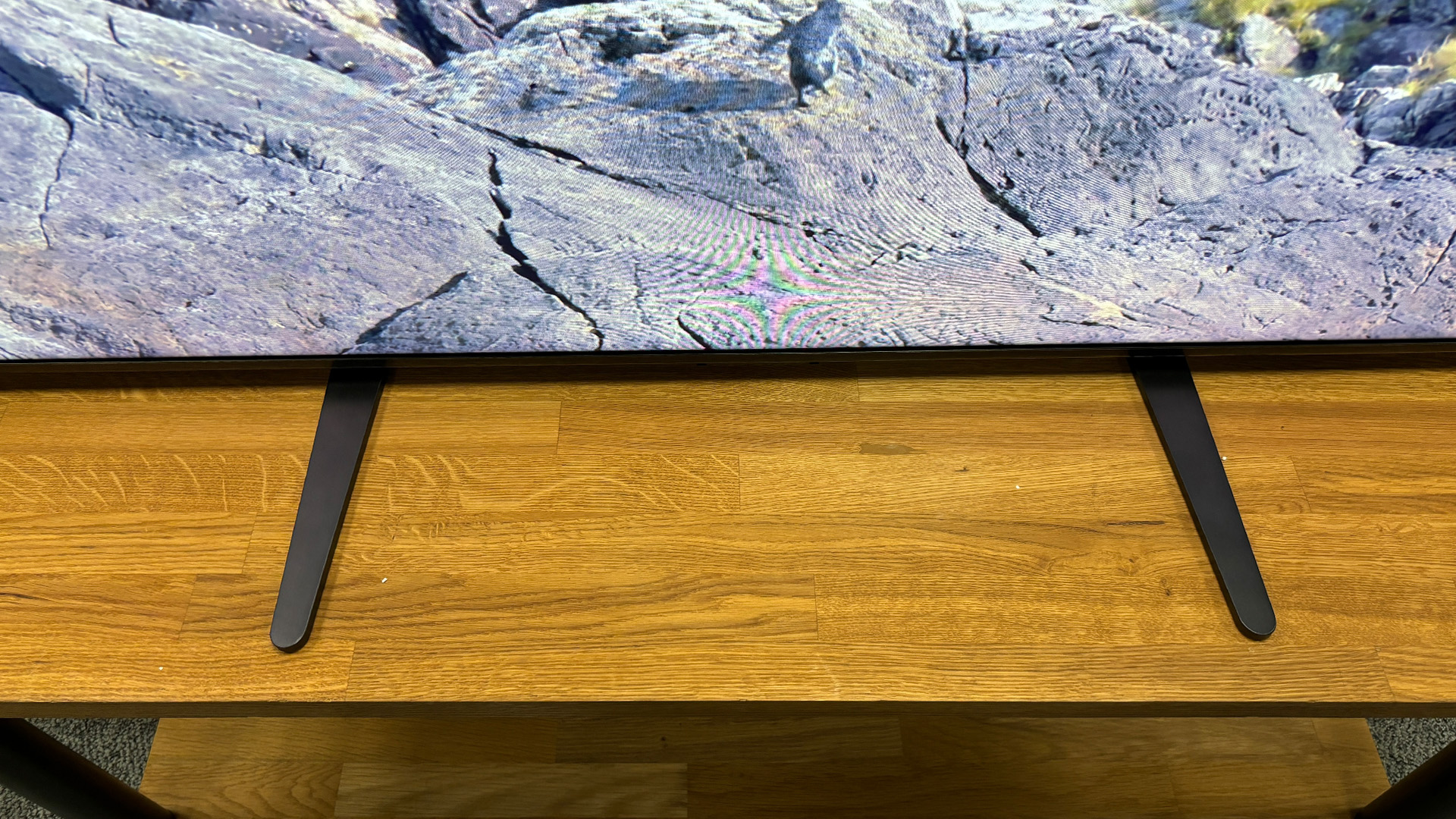
- 2.2.2-channel speaker system with a claimed 70W of power
- Very good sound by TV standards, particularly in terms of clarity and spaciousness
- A little lacking in bass depth, but the sound is always controlled
As is the case with the Sony TVs that have come before it, the Bravia 9 is a very good-sounding TV. It bears a similar character to the X95L in this regard, however, the new height speakers add a greater sense of space and the frame tweeters improve the directionality of the sound. Using our go-to audio test disc, Blade Runner 2049, we deduce that while a soundbar (or, even better, an AVR and speaker package) will of course sound significantly better, the Sony's sound system is a cut above the norm.
Certain examples within the second chapter of Blade Runner 2049 include excellent (by TV speaker standards) vocal clarity and low-level dynamics within the “baseline test” scene, as well as a solid sense of direction to the sound. We can audibly place where Officer K is sitting and where the interviewer’s voice is coming from with our eyes shut, and it helps that the Bravia 9 can also go fairly loud and project sound well into our AV testing room. We also give the new Voice Zoom 3 dialogue-enhancing feature a go and find it to be effective in making dialogue more prominent without squashing the other effects too much.
That being said, we find that Sony’s tendency to not push its built-in speakers too far out of their comfort zone can lead to a slightly weak bass performance, as the thunderous Flight To The LAPD track that plays while Officer K drives back into the city is lacking a bit of weight. Heftier dynamics are also a touch damp, and a bit more punch would be appreciated. That said, Sony’s decision to tune the performance so that it stays well within the sound system’s natural limitations means we never hear any distortion.
Arguably the height channels are the most impressive aspect of the Bravia 9’s speaker system. The upward-firing beam tweeters are automatically calibrated during the set-up of the TV, with the sound directed to the seating position while also measuring the shape of the room. The TV has no issue adapting the sound to our testing space, and the result is genuinely impressive. The sound feels more spacious with the upward-firing drivers involved, and height effects such as rain falling and hitting the rooftops in Blade Runner 2049 sound very effective.
Verdict
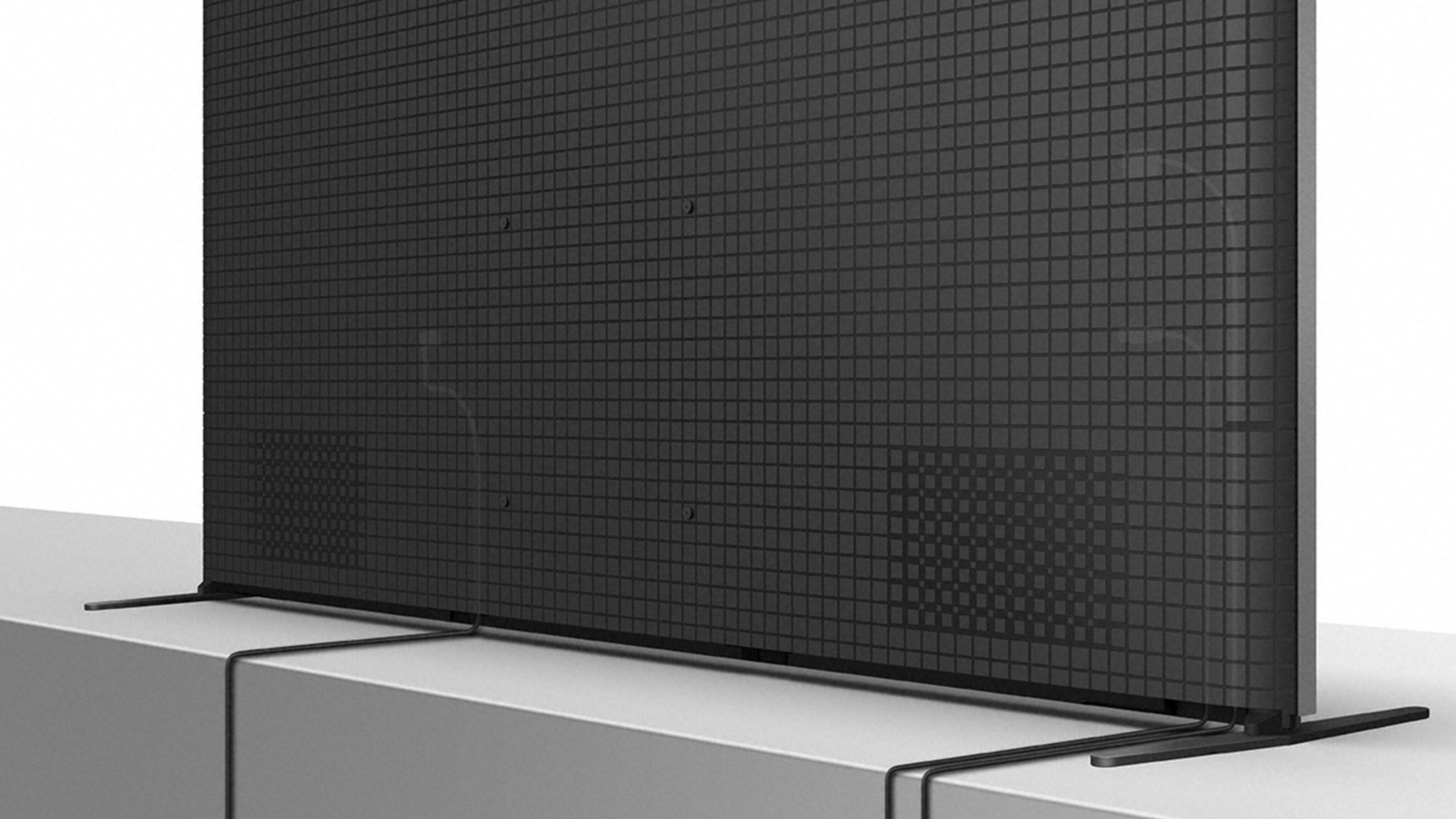
So, has Sony’s big Bravia 9 gamble paid off? Perhaps not yet, but there’s every chance that it could. The next-gen Mini LED backlight is a technical marvel, even if the TV as a complete package isn’t perfect. We have to commend Sony for addressing a lot of the issues we found in our initial testing – the improved backlight behaviour and improved Cinema picture mode are both very much appreciated.
At its best, this TV is sensational – serving up dazzling brightness, impressive blacks (by backlit TV standards), generally vibrant colours and even an enjoyable (if slightly restrained) sound experience.
For most people, though, we simply feel that the cheaper Bravia 8 OLED is the better option thanks to its improved skin tones, more consistent handling of colours, better three-dimensional depth and sharper details. We're certainly not writing off Sony's new Mini LED backlighting system, as a second-generation version could be truly brilliant but, at this point, its strengths – impressive though they are – don't quite outweigh its compromises.
Original review published July 2024. Review updated December 2024.
SCORES
- Picture 4
- Sound 4
- Build 4
Also consider
MORE:
Best TVs: flagship OLEDs and affordable flatscreens tried and tested







